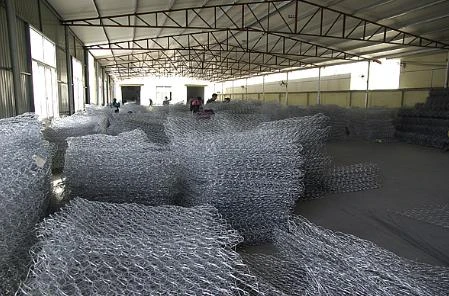 TEL:
+86-13102802206
TEL:
+86-13102802206
 Email:
fencenetting@china.com
Email:
fencenetting@china.com
 Language
Language
 TEL:
+86-13102802206
TEL:
+86-13102802206
 Email:
fencenetting@china.com
Email:
fencenetting@china.com
 Language
Language


Gabion Wall with Wood A Perfect Blend of Nature and Engineering
Gabion walls have gained popularity in recent years for their versatile applications in landscaping, erosion control, and structural support. However, an innovative trend has emerged that combines gabion walls with wooden elements. This harmonious blend not only enhances aesthetic appeal but also adds functionality to these rustic structures. Let’s explore the benefits, design options, and applications of gabion walls intertwined with wood.
Understanding Gabion Walls
Gabion walls are structures made from wire mesh cages filled with rocks, stones, or other materials. They were initially designed for civil engineering applications, such as preventing soil erosion, managing water flow, and providing slope stability. Over time, the adaptability of gabion walls in landscaping has been recognized, leading to their integration into residential and commercial projects.
Gabion walls are not only effective in controlling erosion but also serve as sound barriers, privacy screens, and aesthetic features in gardens and outdoor spaces. Their porous nature allows water to flow through, which mitigates hydrostatic pressure and promotes effective drainage.
The Aesthetic Appeal of Wood
Wood, with its natural beauty and warmth, stands in contrast to the rugged texture of stones used in gabion walls. By incorporating wooden elements—such as fencing, decking, or even planters—into gabion walls, designers can create visually striking combinations that harmonize with nature. The wood provides a sense of comfort and familiarity, making outdoor spaces feel inviting.
Various types of wood can be used with gabion walls, ranging from reclaimed timber for a rustic appearance to treated lumber that offers durability against the elements. The wood can be utilized in different ways, from creating trellises for climbing plants to forming benches or seating areas adjacent to the wall.
Design Options
When designing a gabion wall with wooden elements, there are several approaches one can take
. Here are a few creative ideas
1. Mixed Materials Incorporate wooden slats into the gabion structure by either placing them in between the mesh cages or using them as a top rail. This design adds vertical lines and a sense of height while maintaining the essence of the gabion wall.
2. Planter Boxes Create integrated planter boxes from wood attached to the gabion wall. This allows for greenery to flourish while softening the harshness of the stone. Plants can cascade down, enhancing the overall aesthetic.
3. Fencing and Privacy Screens Erect wooden fencing on top of a gabion wall for added privacy while still allowing for ventilation and light. This combination is particularly effective in backyard settings where seclusion is desired.
4. Artistic Features Employ artistic wooden panels or sculptures to complement the gabion wall. This can serve as a focal point and provide an engaging design element that draws attention and encourages conversation.
Applications
The versatility of gabion walls integrated with wood makes them suitable for various applications
- Residential Landscaping Homeowners can utilize this combination to create beautiful garden boundaries, terrace supports, and decorative fences that enhance property value and curb appeal. - Commercial Installations Businesses can employ gabion walls with wooden designs to establish welcoming entrances, outdoor seating areas, and unique landscaping that attracts customers. - Environmental Restoration In projects focused on sustainable practices, using locally sourced wood alongside native stones can promote ecological balance and conservation efforts.
Conclusion
Gabion walls with wooden elements represent a synergy between the raw power of nature and the warmth of human craftsmanship. This innovative design approach not only fulfills functional requirements but also adds an aesthetic dimension to outdoor spaces. Whether for residential, commercial, or environmental applications, the combination of gabion walls and wood showcases the beauty of what can be achieved when engineering meets artistic expression. By embracing such designs, we can nurture environments that are visually appealing, structurally sound, and in harmony with nature.